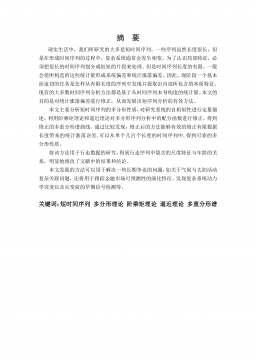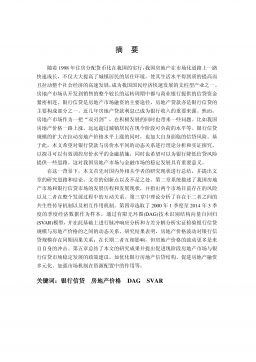辐射供冷房间冷负荷计算方法的研究
VIP免费
I
摘 要
辐射空调系统具有良好的舒适性和节能性,近年来其在国内外受到人们的广
泛关注,它在工程上的应用中也越来越多,但是运用不当也会出现一些问题,比
如在夏季有些时候辐射供冷房间的空气温度一直维持较大的数值,不能使室内空
气温度达到设定值。出现这种现象的主要原因可能在于辐射板的铺设的面积不足,
设计时没有准确计算辐射供冷房间显热冷负荷。
本文首先简要地介绍了辐射空调系统以及它的优缺点,并且根据实际工程项
目,阐述了辐射空调系统在实际应用中存在的问题,特别是辐射供冷房间冷负荷
计算相关的问题。辐射系统和传统的空调系统的冷负荷差异并没有被人们完全理
解,设计师在进行辐射空调系统冷负荷的计算时仍然采用传统的负荷计算方法,
比如冷负荷系数法、谐波反应法等,这样就会经常出现计算出的冷负荷不准确。
其次,对传统空调供冷房间的冷负荷的计算方法——谐波反应法、反应系数
法以及冷负荷系数法进行介绍,并分析它们不适合计算辐射供冷房间冷负荷的原
因。针对这种状况,本文提出了一套计算辐射供冷房间冷负荷的计算方法,该算
法以热平衡原则为基础,充分考虑辐射供冷房间的内的各种得热类型和各种传热
方式,特别是辐射传热,建立了辐射供冷房间数学模型,列出房间各内壁面的热
平衡方程、辐射板表面热平衡方程和空气的热平衡方程。
随后,为了验证辐射供冷房间冷负荷算法的准确性,设计了一套实验装置,
包括恒温冷水机组、电气控制箱以及一个辐射供冷小房间,并在这个小房间的各
个内壁、唯一的一个外墙的外表面以及室内空气中布置温度测点,实时采集这些
温度数据。设置多个工况点,并对比各个工况点的实测数据与理论计算计算结果,
发现计算出的各个工况点的理论值都基本上能与实测值相吻合。
最后,本文还设置两个空调房间,一个作为辐射供冷房间,另一个作为传统
供冷房间,使用本文给出的辐射供冷房间显热冷负荷算法、冷负荷系数法以及基
于热平衡的算法 2(下文有介绍)作为它们的显热冷负荷计算方法,并设置 6种对
比工况,来比较辐射供冷房间显热冷负荷算法与冷负荷系数法的区别,同时也对
比了辐射供冷房间与传统空调房间的显热冷负荷、各壁面的温度特点。
关键词:辐射供冷 冷负荷 计算方法
II
ABSTRACT
As radiant cooling system has comfort and energy saving characteristic, applying of
radiant system in project has become more and more popular. Many home and aboard
people have been attracted by radiant system’s advantages compared to the air system.
But we may encounter many problems with radiant system inappropriate applied. For
instance, Air temperature of radiant cooling room maintains high value sometimes in
summer and can’t be cooled down to the set point. The major reason for this
phenomenon probably is that the total area of radiant panel is not enough for cooling. It
is result from inaccuracy calculated sensible cooling load of radiant cooling room.
Firstly, this passage introduces radiant cooling system and its advantages and
disadvantages. Based on actual project, it elaborates radiant cooling system existing
questions in practice, especially about the calculation of the cooling load for radiant
cooling room. Cooling load differences between radiant cooling system and traditional
air conditioning system has not been deeply recognized. Designer still applied the
calculation method for traditional air conditioning system to calculate the cooling load
of radiant cooling room, such as cooling load factor method, harmonic response method
and so on, which may usually encounters cooling load inaccuracy calculated
phenomenon.
Secondly, this passage introduces traditional cooling load calculation method,
including harmonic response method, response coefficient method, cooling load factor
method. It also analyses the reasons why traditional cooling load calculation method can
be used to calculate the cooling load of radiant cooling room. According to this situation,
this passage proposes a cooling load calculation method for radiant cooling room, which
based on heat balance method, and included the inner surface heat balance equation of
maintenance structures, radiant panel surface heat balance equation, the indoor air heat
balance equation and so on.
Thirdly, in order to verify accuracy of cooling load calculation method for radiant
cooling room, this passage designs an experimental device, which includes constant
temperature chiller, electric control box, and a small radiant cooling room. In
experiment, Six temperature sensors were placed on the surface of every inner surface
of the small radiant cooling room and one was placed in the air of the room and one was
III
placed on the outer surface of the external wall, which collect temperature data every
30s. Many cases have been set for comparing the results of each experiment to the
corresponding result of calculation method for radiant cooling room.
Last but not least, the passage also set two air-conditioning rooms, one is radiant
cooling room and another is traditional cooling room. Using sensible cooling load
calculation method for radiant cooling room provided by this passage, cooling load
factor method, and calculation method 2 based on thermal balance (introduced in
section 6) to calculate sensible cooling load of Room(A) and Room(B). In this passage
6 cases have been set up, in order to compare sensible heat cooling load calculation
method with cooling load factor method and comparing radiant cooling room with
traditional cooling room. At the same time, surface temperature character of Room(A)
and Room(B) has been compared.
Key Word:radiant cooling, cooling load, calculation method
IV
目 录
中文摘要 ........................................................................................................................... I
ABSTRACT ..................................................................................................................... II
第一章 绪论 .....................................................................................................................1
1.1 课题的研究背景 ..................................................................................................... 1
1.2 课题的提出及意义 ................................................................................................. 2
1.3 国内外研究现状 ..................................................................................................... 3
1.3.1 国外研究现状 .................................................................................................. 3
1.3.2 国内研究现状 .................................................................................................. 4
1.4 本文主要工作 ......................................................................................................... 5
1.4.1 课题研究目的 .................................................................................................. 5
1.4.2 课题研究内容 .................................................................................................. 5
1.5 本章小结 ................................................................................................................. 6
第二章 辐射空调系统及其技术分析 .............................................................................7
2.1 辐射空调系统简介 ................................................................................................. 7
2.1.1 辐射空调系统的基本构造 .............................................................................. 7
2.1.2 辐射空调系统的分类 ...................................................................................... 9
2.2 辐射空调系统特点分析 ....................................................................................... 12
2.2.1 辐射空调系统的优点 .................................................................................... 12
2.2.2 辐射空调系统的缺点 .................................................................................... 13
2.2.3 辐射供冷房间传热的特点 ............................................................................ 14
2.3 辐射空调系统在应用中存在的问题 ................................................................... 15
2.4 辐射供冷供暖房间热环境原理分析 ................................................................... 16
2.4.1 辐射供冷供暖房间的室内热湿环境 ............................................................ 16
2.4.2 热舒适评价方法 ............................................................................................ 17
2.5 本章小结 ............................................................................................................... 18
第三章 传统空调负荷计算方法的局限性分析 ...........................................................19
3.1 传统空调负荷计算方法介绍 ............................................................................... 19
3.1.1 空调负荷计算方法的发展 ............................................................................ 19
3.1.2 传统空调负荷计算方法 ................................................................................ 19
3.2 传统算方法用于计算辐射供冷建筑的适用性分析 ........................................... 23
3.2.1 计算对象的差异 ............................................................................................ 23
3.2.2 传热的差异 .................................................................................................... 23
V
3.2.3 热湿负荷处理方式的差异 ............................................................................ 27
3.2.4 传统算法的局限性分析 ................................................................................ 27
3.3 本章小结 ............................................................................................................... 30
第四章 辐射供冷房间负荷计算方法 ...........................................................................31
4.1 辐射供冷房间冷负荷的定义 ............................................................................... 31
4.1.1 冷负荷计算时设计参数的选取 .................................................................... 31
4.1.2 辐射供冷房间冷负荷的定义 ........................................................................ 32
4.2 辐射供冷房间的热平衡 ....................................................................................... 34
4.2.1 维护结构内表面的热平衡方程 .................................................................... 35
4.2.2 室内空气的热平衡方程 ................................................................................ 37
4.2.3 辐射板表面的热平衡方程 ............................................................................ 38
4.3 辐射供冷房间冷负荷的计算 ............................................................................... 39
4.3.1 辐射空调房间显热冷负荷的求解 ................................................................ 39
4.3.2 辐射空调房间的湿负荷的求解 .................................................................... 42
4.4 本章小结 ............................................................................................................... 43
第五章 计算方法的实验验证 .......................................................................................44
5.1 实验装置介绍 ....................................................................................................... 44
5.1.1 辐射供冷小房间 ............................................................................................ 45
5.1.2 恒温冷水主机 ................................................................................................ 47
5.1.3 实验装置的电气控制 .................................................................................... 47
5.1.4 实验数据的采集 ............................................................................................ 48
5.2 实验结果及分析 ................................................................................................... 50
5.2.1 实验验证的方式及实验工况的设置 ........................................................... 50
5.2.2 实验结果及数据分析 .................................................................................... 51
5.3 本章小结 ............................................................................................................... 55
第六章 辐射供冷房间显热冷负荷算例分析 ...............................................................56
6.1 对比算例模型介绍 ............................................................................................... 56
6.1.1 计算模型介绍 ................................................................................................ 56
6.1.2 室内外计算参数设置 .................................................................................... 58
6.2 算例中房间 B所采用的传统负荷计算方法 ...................................................... 59
6.2.1 冷负荷系数法计算小房间显热负荷(算法 1) ........................................ 59
6.2.2 房间 B的热平衡算法(算法 2) ................................................................ 60
6.3 算例计算结果对比与分析 ................................................................................... 61
VI
6.3.1 工况 C1、C2、C3 的计算结果与分析 ........................................................ 61
6.3.2 工况 C4、C5、C6 的计算结果与分析 ........................................................ 62
6.3.3 工况 C1 与C4 的计算结果与分析 ............................................................... 65
6.4 本章小结 ............................................................................................................... 66
第七章 结论与展望 .......................................................................................................67
7.1 主要研究成果及结论 ........................................................................................... 67
7.2 需要进一步开展的工作 ....................................................................................... 68
7.3 展望 ....................................................................................................................... 69
参考文献 .........................................................................................................................70
在读期间发表的论文与专利 .........................................................................................73
致谢 .................................................................................................................................74
相关推荐
-
七年级数学下册(易错30题专练)(沪教版)-第13章 相交线 平行线(原卷版)VIP免费
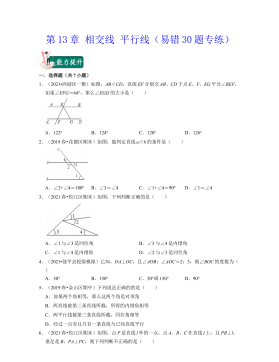
 2024-10-14 25
2024-10-14 25 -
七年级数学下册(易错30题专练)(沪教版)-第13章 相交线 平行线(解析版)VIP免费
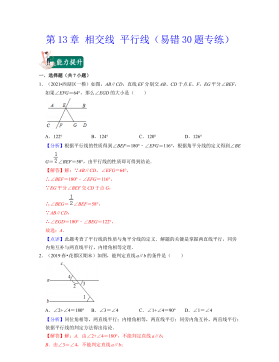
 2024-10-14 28
2024-10-14 28 -
七年级数学下册(易错30题专练)(沪教版)-第12章 实数(原卷版)VIP免费
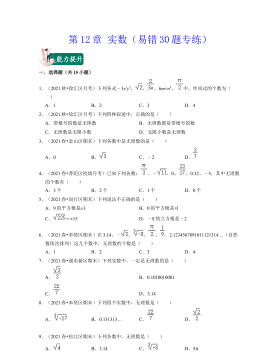
 2024-10-14 25
2024-10-14 25 -
七年级数学下册(易错30题专练)(沪教版)-第12章 实数(解析版)VIP免费
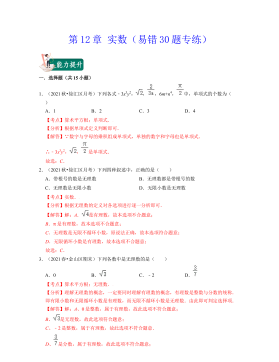
 2024-10-14 19
2024-10-14 19 -
七年级数学下册(压轴30题专练)(沪教版)-第15章平面直角坐标系(原卷版)VIP免费
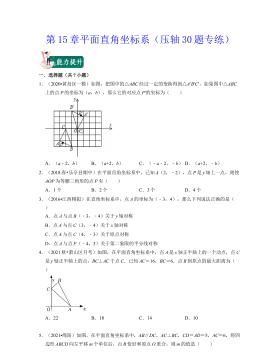
 2024-10-14 18
2024-10-14 18 -
七年级数学下册(压轴30题专练)(沪教版)-第15章平面直角坐标系(解析版)VIP免费

 2024-10-14 27
2024-10-14 27 -
七年级数学下册(压轴30题专练)(沪教版)-第14章三角形(原卷版)VIP免费

 2024-10-14 18
2024-10-14 18 -
七年级数学下册(压轴30题专练)(沪教版)-第14章三角形(解析版)VIP免费

 2024-10-14 30
2024-10-14 30 -
七年级数学下册(压轴30题专练)(沪教版)-第13章 相交线 平行线(原卷版)VIP免费
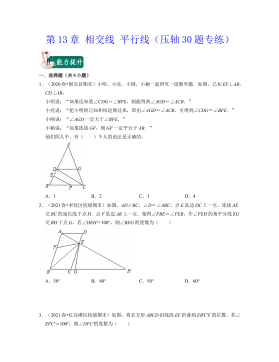
 2024-10-14 25
2024-10-14 25 -
七年级数学下册(压轴30题专练)(沪教版)-第13章 相交线 平行线(解析版)VIP免费
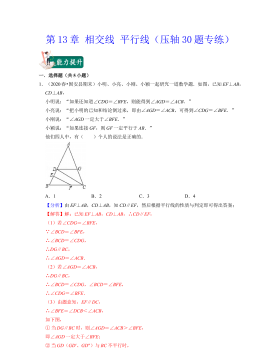
 2024-10-14 22
2024-10-14 22
作者:侯斌
分类:高等教育资料
价格:15积分
属性:78 页
大小:3.25MB
格式:PDF
时间:2025-01-09
相关内容
-

七年级数学下册(压轴30题专练)(沪教版)-第15章平面直角坐标系(原卷版)
分类:中小学教育资料
时间:2024-10-14
标签:无
格式:DOCX
价格:15 积分
-

七年级数学下册(压轴30题专练)(沪教版)-第15章平面直角坐标系(解析版)
分类:中小学教育资料
时间:2024-10-14
标签:无
格式:DOCX
价格:15 积分
-

七年级数学下册(压轴30题专练)(沪教版)-第14章三角形(原卷版)
分类:中小学教育资料
时间:2024-10-14
标签:无
格式:DOCX
价格:15 积分
-

七年级数学下册(压轴30题专练)(沪教版)-第14章三角形(解析版)
分类:中小学教育资料
时间:2024-10-14
标签:无
格式:DOCX
价格:15 积分
-

七年级数学下册(压轴30题专练)(沪教版)-第13章 相交线 平行线(原卷版)
分类:中小学教育资料
时间:2024-10-14
标签:无
格式:DOCX
价格:15 积分


